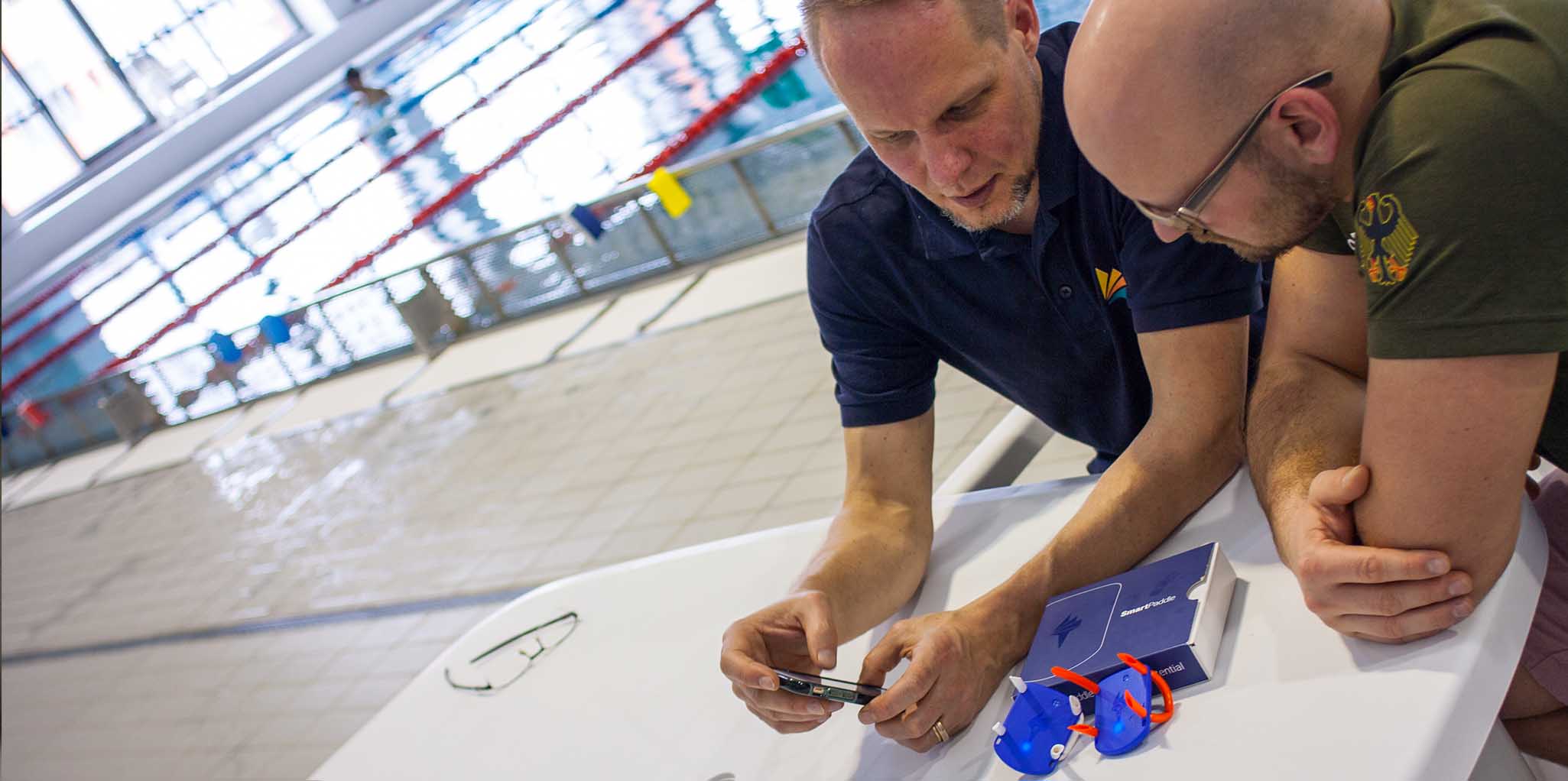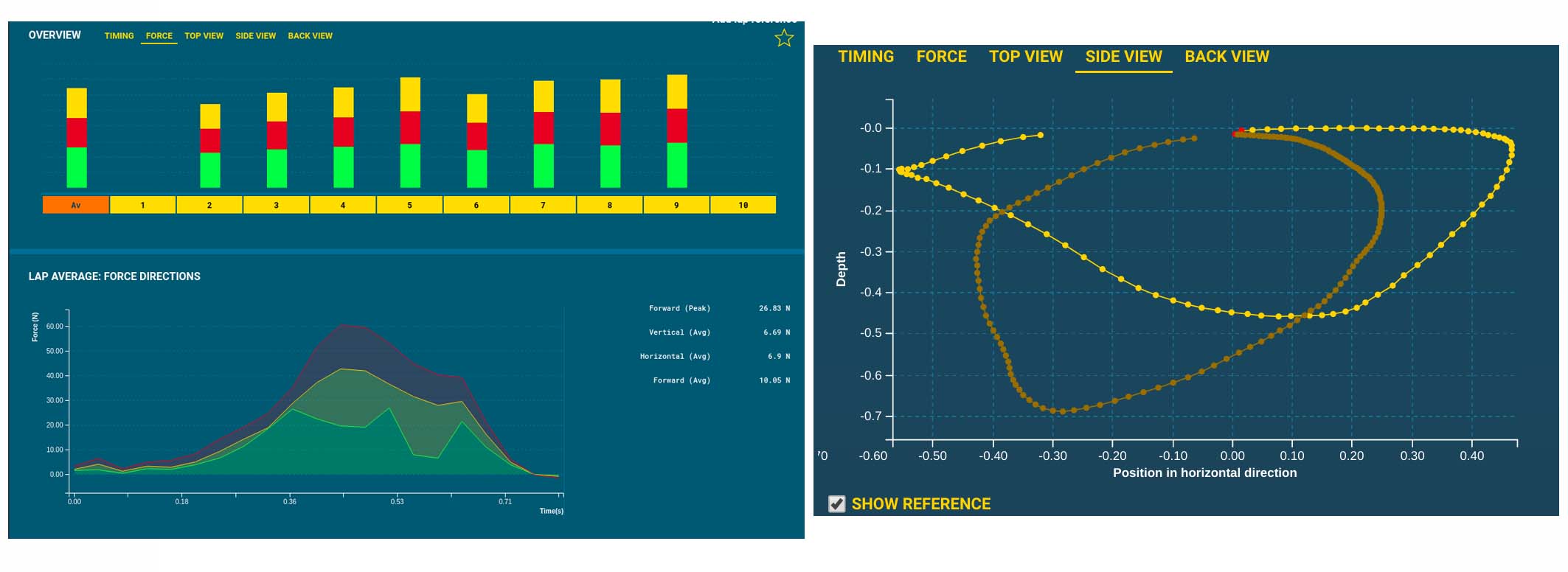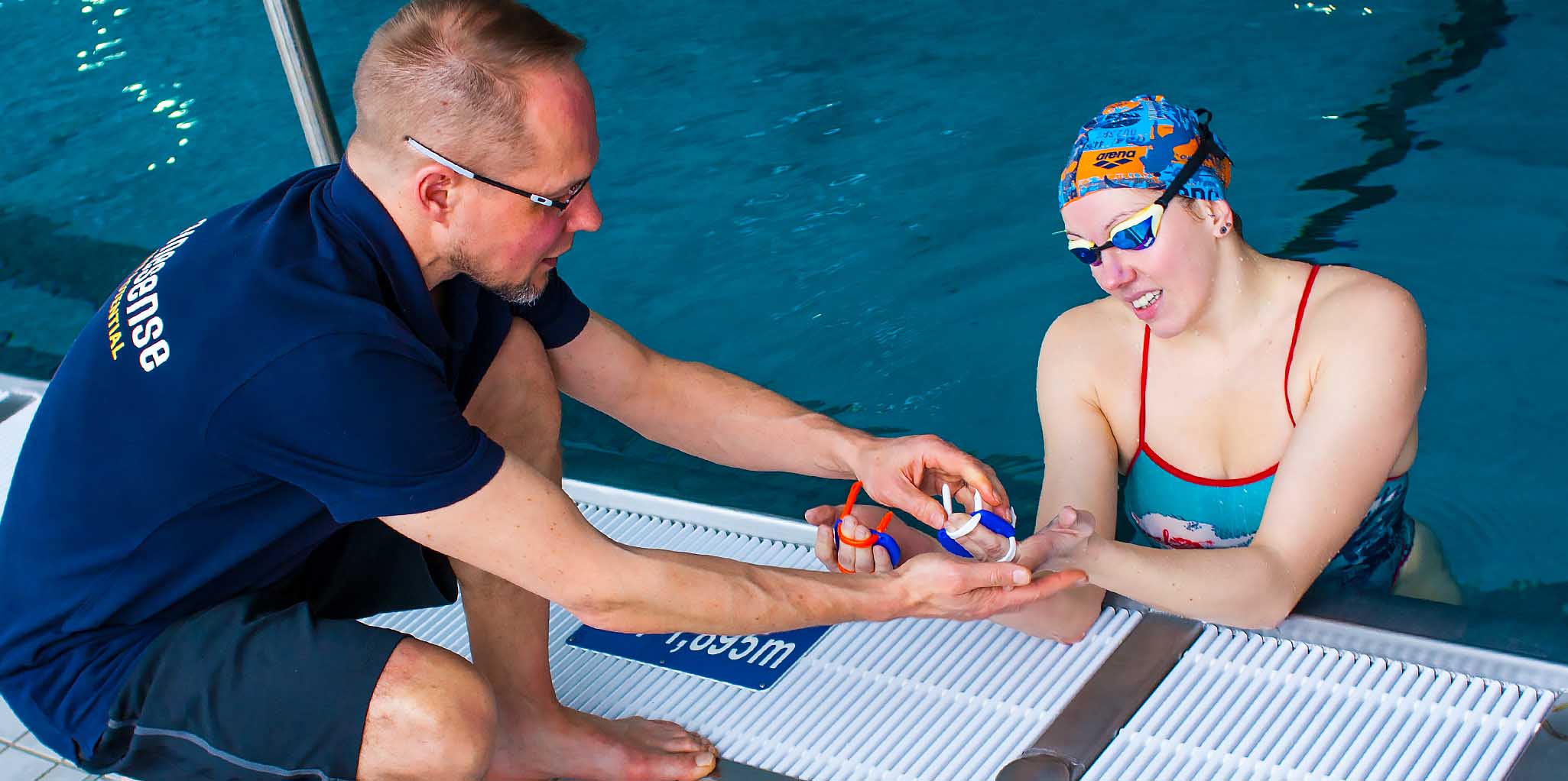For cyclists, measuring force is an everyday part of training. Cyclists can use gadgets to calculate the force applied to a bicycle pedal when in motion, wattage being one of the most important factors in the results. For swimmers, strength and force measurements could be just as useful, but how force is exerted in the water isn’t as clear as in cycling. How much energy does a swimmer use during an arm pull? In which direction does the energy go? What kind of effect does it have on the swimmer’s performance? A Finnish startup is asking exactly those questions, and finding the answers in a new technology that’s barely larger than a box of Tic Tacs.
It’s called the Smart Paddle. Similar to ordinary finger paddles, the machine is attached to the swimmers hand with rubber bands. Instead of being used to train the technique of swimmers such as in other training aids, the Smart Paddle collects data on the swimmers’ strength in the water.
“In swimming, we often look at meters swum and intensity of the training,” says Riku Rimpelä, member of the startup company Trainsense that developed the Smart Paddle. “But the question of efficiency of movement is neglected. It’s simply impossible for the coach to see from the side of the pool what exactly the athlete is doing under the surface of the water and at which moment, for example, he puts the biggest force in his pull.”
This is exactly what the Smart Paddle tries to visualize. Equipped with several sensors that measure how much pressure acts on the device while swimming, the Smart Paddle can detect which direction the force goes and which course the stroke takes. When the athlete finishes his or her lap, the data can be transferred via Bluetooth to the trainer’s smart phone, sent to the cloud via wifi, and be saved there. Then the trainer can check the results and review the data on the Trainsense app.
Of course, the development of the app and its features required highly professional programming, which is exactly the Finnish company’s strongest asset. The developers of the Swim Paddle were previously employed as engineers at technology giant Nokia. When the company was taking a downward turn, they found a new project with the Smart Paddle where they could combine their professional knowledge for technology development with their private passion for swimming. They created a product ready for purchase in less than three years. “I've spent more than 20 years in meeting rooms, so it's refreshing to do something you’re passionate about,” says Riku, who himself has been active in swimming since the 1980s.

Riku Rimpelä from Trainsense explaining the Smart Paddle data to Coach Maik Zeh.
We invited Rimpelä to fly in from Finland to present the Smart Paddle in Potsdam, just outside of Berlin. Several top German swimmers and members of the Paralympic national team train here. Their coach, Maik Zeh, is now testing the new tool in daily work with his athletes.
Zeh, who coaches World Champion and Paralympic medalist Verena Schott amongst other athletes, explains: “In Paralympic swimming, we’re constantly working around certain limitations, or learning how to use limitations to our advantage. We’re curious if the Smart Paddle can help us with that.”
In Potsdam we got to see the Smart Paddle in action. Within seconds after each lap, the trainer had performance statistics on his phone, showing arm pull intensity, the highest intensity phases of the pull, which direction force was exerted by the swimmer, even showing hand movements during the pull. Hand movement tracking can be very important to spot technical errors. For example, the Smart Paddle can show a stretched arm during crawl swimming or resistance-prone forward movements during the stretching phase in breaststroke.
"It visualizes the swimmer’s feeling
to the water and enables more direct
interaction with the swimmer.”
“When they try it for the first time, a lot of athletes think, ‘What on earth is this.’ But after a few weeks, you can really notice an effect,” says Riku. Not only can the data be used to compare a swimmers initial and current statistics to track improvement, it can also be used to compare statistics from swimmers around the world. To use this function, trainers and swimmers can upload their statistics anonymously to the Trainsense app. In just six months, more than 12,000 data sets from various swimming levels have been uploaded. “We work with teams in Canada, the USA, Czech Republic and Sweden,” says Riku. Additionally, the Trainsense team is open to outside input, typical for the software developer scene. “In information technology, the open source movement has brought a real innovation leap. That's why it's always important to be open to fresh ideas.”
The developers are aware that conditions for cyclists and for swimmers aren’t the same. That's why the Smart Paddle does not simply focus on specific wattages. “The device can do that, but it’s not enough to just show how much force is applied. Energy is exerted by not only the swimmer’s hands but also, for example, the swimmer’s forearms. So showing only the wattage would give a false sense of accuracy.” Instead, the app shows a force profile that analyses how and when the force is applied. “It visualizes the swimmer’s feeling to the water and enables more direct interaction with the swimmer.”
“We’re curious to see how the tool proves itself in daily training use,” says Coach Zeh. “The European Championships are in August,” he continued, “maybe we can generate some results by then.” As soon as the swimmers from Potsdam have finished the app testing period, Zeh will give us his impression from working with the Smart Paddle. Of course, you’ll be able to find the results here on fastlane4.com and we’ll let you know if the Smart Paddle could be a new kind of powermeter for the pool.
Examples for the data displayed by the Trainsense App

